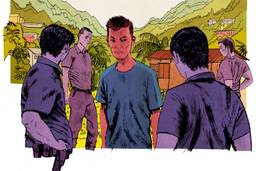The Catholic Church Siphoned Away $30 Million Paid to Native People for Stolen Land

Free, government-funded schools were rarely built on reservations—meaning that for many Native families, Catholic mission schools were the only option.
The brittle wooden floors creak as we climb the stairs to the long room that served as a dormitory for Ojibwe girls at St. Mary’s Mission School on the Red Lake Indian Reservation in Minnesota.
“My mother slept here,” says Kathryn “Jody” Beaulieu, 70, my guide and a Red Lake tribal citizen. She points to one end of the narrow room. A few white iron bed frames are still stacked in the corner. “Her sisters slept down at the other end, about 100 feet away.”
Beaulieu’s mother, Ruth Jourdain-Fevig, was 6 when she was sent away to the mission school in the early 1930s. “She said she was afraid and tried to crawl into bed with her older sisters, but the nun would scold her and drag her back to her bed,” Beaulieu says. “It was as though they had no compassion for the suffering of a child. Her sisters must have seemed so far away.”
It took decades for Ruth, who died in 2015, to tell Beaulieu about her experiences. Even then, it was only in brief. “I had no idea she’d gone to school here until we went on a tour of the mission buildings in the 1990s,” Beaulieu says. “I think she must have suppressed the memory of her days here until we walked up the stairs and she physically stood in this spot. I think it was just too painful for her.”
Indian boarding and day schools attempted, for decades, to forcibly assimilate Native children. The schools have a long, documented history of abuse and cultural debasement. Former students have recounted sexual abuse, corporal punishment and neglect at the hands of teachers and administrators. Students were prohibited from speaking Native languages and practicing Native traditions, often with the threat of violence. Abuse was reported at both government-run and religious institutions.
Of the approximately 400 Indian boarding and day schools in the United States (which started around 1830), the federal government operated more than half. Various Christian denominations operated the remaining schools, but the Catholic Church dominated the field with about 100. My mother attended one of these schools in the 1930s and 1940s: St. Mary’s Indian Boarding School on the Bad River Ojibwe Reservation in Wisconsin, about 250 miles from Red Lake. Like others, my mother carried the trauma and shame of that experience her entire life.
The economic violations committed at these schools, however, have not been widely reported. A yearlong effort from Type Investigations and In These Times has found that, for the greater part of the 20th century, the federal government routed funds — designated as direct payments for Native people — to Catholic mission schools, draining families of millions of dollars by today’s measures.
For many parents, some of whom were barely literate, the approval to send their children to these religious boarding schools took the form of thumbprints. Pressed on government forms, signed and witnessed by church and government officials, these thumbprints authorized the mission schools to take portions of treaty and trust funds—owed to Native families by the federal government in exchange for their land — to pay tuition.
Ostensibly, Native Americans chose to send their children to these mission schools rather than free, government-funded schools. But federal schools were rarely built on reservations in the early 20th century. With the distribution of rations and other goods also sometimes dependent on Native children attending school, Native Americans were often effectively coerced into paying for their own assimilation.
In 1920, Beaulieu’s grandfather, Joseph Jourdain, signed a petition allowing St. Mary’s to take portions of his treaty and trust funds to cover tuition. Although tuition costs varied, Jourdain agreed to pay approximately three shares of his treaty funds annually — more than $400 today.
“In those days on the reservation, people hunted and fished all year round, like subsistence living,” Beaulieu says. She surmises there was not much cash money available to pay for things.
The sight of her grandfather’s name on the petition offers Beaulieu an uncomfortable, tangible proof of her mother’s experience. “Not only was my mom separated from her sisters during nights, she was also separated from her parents during her time at the mission,” she reflects later.
“That must have been a terrible memory for her.”
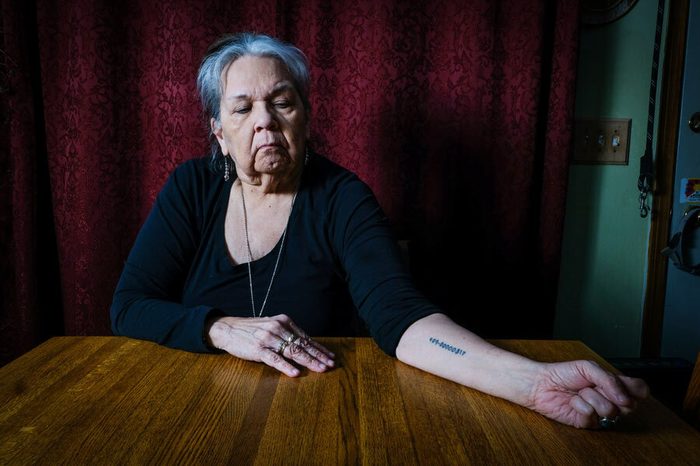
The story of Indian treaties and subsequent federal Indian policies is a labyrinth of confusing and sometimes conflicting actions aimed at solving the “Indian problem.” Native Americans living on ancestral lands presented an obstacle to colonists’ occupation and settlement. From 1778 to 1871, hundreds of treaties, signed by the U.S. government, promised Native people not only cash and goods but often healthcare and education — in exchange for more than 1.5 billion acres. Subsequent policies, like the 1887 Dawes Act, appropriated even more land. Individual treaty and trust funds were established by the federal government to pay Native peoples for profits earned through the use of their ceded lands.
But the schools promised by the federal government were not built on every reservation. Meanwhile, the government gave Christian churches, including the Catholic Church, land for mission schools. Federal schools were also known to be particularly cruel to Native students, often forbidding contact between students and families. This led some parents to opt for religious boarding schools in the hope that their children would be treated marginally better.
In 1900, Catholic leadership introduced the idea of allowing Native Americans to authorize the federal government to divert individual Native treaty and trust funds to pay for tuition at Catholic schools. Shortly after, a group of three Sioux Indians from South Dakota sued the federal government, arguing the agreements amounted to theft. Schooling should have already been provided for free, the plaintiffs argued, through previous treaties. The case, Quick Bear v. Leupp, reached the Supreme Court in 1908.
Ultimately, the court ruled that mission school leaders could ask Native Americans to use individual treaty and trust funds to pay tuition at their religious schools. Chief Justice Melville Fuller wrote that forbidding Natives to use their money as they wanted would deny them free exercise of their rights. Beginning in 1908, then, the principal of each school was required to gather signatures (or thumbprints) from parents to authorize the use of the funds. The petitions then had to be submitted to the Bureau of Catholic Indian Missions (BCIM) and the Bureau of Indian Affairs.
The cumulative drain from Native families’ wealth was significant. Type Investigations and In These Times located annual reports from BCIM for nine years that Catholic mission schools received funding this way. Given the limited information available to the public, it is difficult to know the total amount of funds paid to the missions during this period. These records, however, offer a glimpse of the scope.
In 1910, BCIM records show Native American parents signed over $128,308 to the mission schools — more than $3.5 million today. In 1935, the schools received $234,675 from Native trust and treaty funds — about $4.3 million today. In total, over the nine years records were available (1910, 1933, 1935, 1939 – 1943, 1954), Native parents gave the schools some $30.4 million, adjusted for inflation.
This number does not include federal student rations diverted to schools, other federal funding, the value of the extensive Native lands given to the schools by the government, nor the other 53 years between 1908 and 1970 for which records were unavailable.
According to a report from the Raynor Memorial Libraries at Marquette University, a Catholic Jesuit university that maintains a special collection of BCIM archives, the practice stopped in the 1970s — because the Native trusts had been siphoned to depletion.
Kathleen Holscher, chair of Roman Catholic studies at the University of New Mexico, says the boarding schools played a number of important roles for the Catholic Church. Mission work with Native Americans elevated the Church in the eyes of the general public, for example, as Catholic missions came to be seen as integral to the American project of “civilizing” the American wilderness.
The program began a partnership with the government that solidified the Catholic Church’s political connections. Holscher notes, for example, that William Ketcham, BCIM director, was appointed by President William Taft in 1912 to the Board of Indian Commissioners, a congressional advisory board. But the Church needed money to fund its expensive missions. “Catholic leaders professed great interest in saving Native American souls, but in order to do so, they had to make money,” Holscher says.
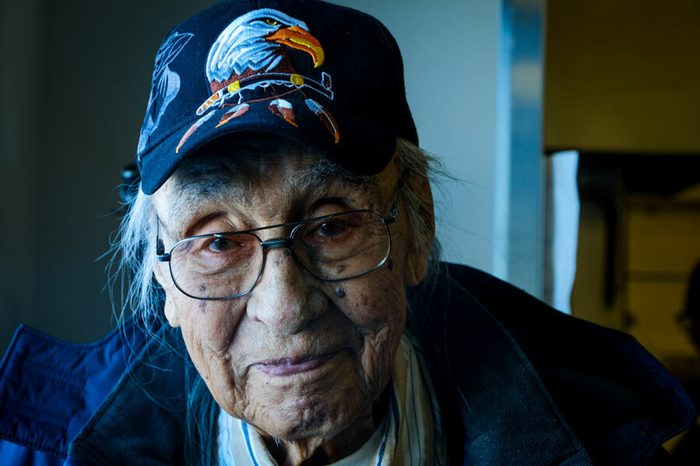
Many Native parents had little choice in sending their children to the nearby Catholic mission schools. Lack of transportation, for example, prevented attendance at government-funded schools miles away. As penalty for truancy, the federal government could withhold food rations and goods for an entire family.
According to Frank Dickenson, 90, who is Ojibwe, such was the case in Red Lake. The federal government promised the Red Lake Nation education in exchange for their lands. A federally funded Bureau of Indian Affairs school was located on the reservation, but it was more than 5 miles from the town of Red Lake, inaccessible for many in rural Minnesota’s extreme winters.
In a sunny room crowded with elders joking together as they eat their daily meal, Dickenson carefully runs his index finger down the column of thumbprints and names on the 1920 petition that his grandmother signed to direct her treaty and trust funds to St. Mary’s.
“Here’s my grandma, Jennie Mason,” he says. Mason, too, had signed the document with her thumbprint. According to Dickenson, who himself attended St. Mary’s in the 1940s, Native parents held little authority over mission school policies and procedures. He recalls witnessing harsh beatings of students by priests for being late to class and other minor infractions.
“No one would believe us if we complained to the Church or the Indian agents,” says Dickenson, referring to government officials who oversaw dispersal of funds and tribal adherence to U.S. federal rules. The nuns and priests, Dickenson says, “wrote everything down in reports to the government. According to those reports, they were always in the right.
“Kids were always running away from the mission school. We used to have a truant officer on the reservation. He was always busy chasing kids through the woods. We ran away because they were so cruel to us.”
Red Lake citizens often fed their families through hunting and gathering, with very little in the way of cash. The impact of using personal portions of trust and treaty funds to pay tuition was substantial.
“One time I looked in the cupboard and there was nothing there,” Dickenson recalls. “I asked Mom, ‘Aren’t we going to have any dinner?’ She fixed us some salt pork and potatoes but she told us, ‘You have to share that.’ ”
Dickenson remembers the quality and amount of food as meager. Some former students say they were asked to cover school costs in yet another way — by working for half the school day. Tom Deragon, 69, attended St. Mary’s on the Bad River Reservation from first through eighth grade. “In second grade, I started taking care of the chicken coop … before school” for the nuns and priests, says Deragon. “I did that for five, six years. … I was paying off a book bill.” His father also gave the school free firewood every few weeks to help pay the bill.
People seldom questioned the harsh rules and workings of the school, according to Deragon. The Treaty of 1854 had promised money to build schools for Bad River and surrounding bands of Ojibwe. But “there was no other option” than St. Mary’s, Deragon says. Students couldn’t attend the nearest public school, about 25 miles away in the town of Ashland, until high school. “I honestly didn’t learn very much [at St. Mary’s]. I learned more from my older brothers and sisters. … You didn’t even have to pass your class. They’d push you on [to the next grade] anyway,” he adds.
According to Delphine Hurd, 73, who attended St. Mary’s in Bad River in the 1950s and 1960s, students were ostracized for not having money. “The nuns shamed us if our folks were poor or drank, or if we came from [single-parent] homes,” says Hurd, who was raised by a single mother. “We were always treated as ‘less than.’”
It is impossible to determine how much the siphoning away of these millions contributes to indigenous poverty today. But the diminishment of monetary and cultural wealth, through federal and church policies, has played a large role in traumatizing and impoverishing Native Americans.
Today, the poverty rate among Native Americans is almost double the national average. One in four Native adults lives below the poverty line, as does one in three children.
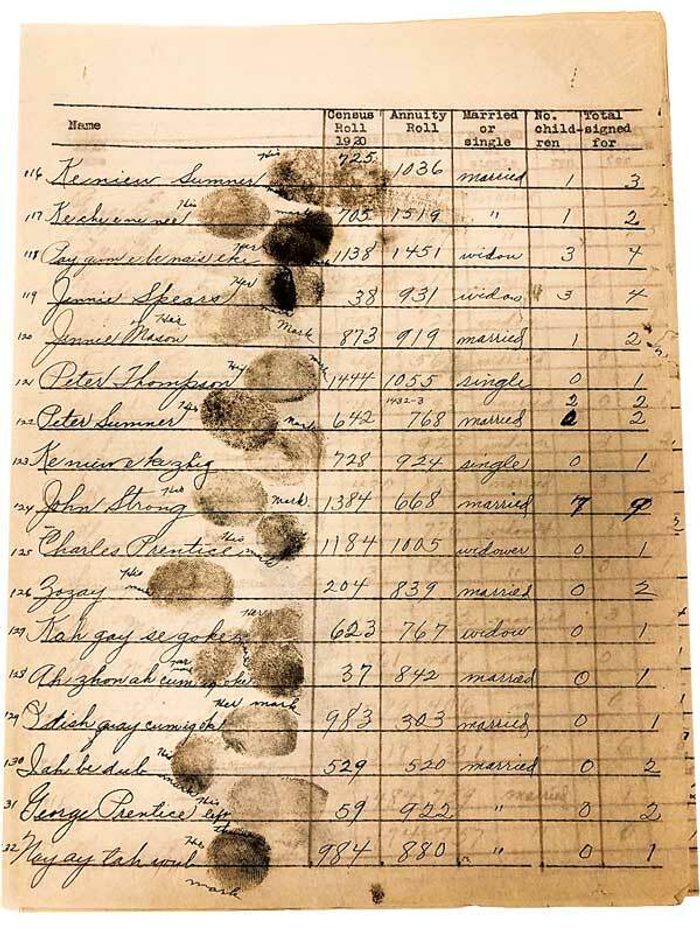
Among tribes, some scattered resistance did exist against the use of individual treaty funds for Catholic mission schools. Numerous archival threads of correspondence between school principals and the BCIM reference difficulties in persuading Native people to sign over their funds both before and after the Quick Bear v. Leupp decision. Ketcham wrote to Senator Nelson Aldrich in 1906, for example, to complain about requiring Native Americans to sign petitions: “The Indians are indignant over the sacrifices required of them and begin to look upon the missionaries and schools as mercenaries.”
In another example, in 1929, Benjamin Thompson of the Lower Brule Reservation in South Dakota wrote to his local Bureau of Indian Affairs agent, “to ask you please erase my name from that paper I signed. I do not wish to sign over money which my children have coming to them for the benefit of the Catholic Church. The paper was badly misrepresented to us.” The agent forwarded Thompson’s letter to the Commissioner of Indian Affairs, who later indicated Thompson’s name was removed from the petition.
The Red Lake general council passed a resolution in 1935 declaring tuition contracts with St. Mary’s cover a single year, whereas previous contracts extended over several years. The council also resolved that St. Mary’s should provide proper food and should not be run for profit.
A Red Lake Indian Agency social worker sent a memo in 1937 to agency superintendent Raymond H. Bitney regarding tuition payment to St. Mary’s, explaining that Red Lake members were concerned about tribal funds and the poor quality of education at the mission school. The complaints, however, do not appear to have had any impact on the tuition paid to the school.
In a series of 1934 and 1935 letters from Sister Macaria, principal of St. Mary’s in Bad River, to the Rev. William Hughes, BCIM director, and Elizabeth Yerxa, director of the Juvenile Department of the Wisconsin State Board of Control, Macaria complains about the interference of state regulators at St. Mary’s. Though there is no anecdotal evidence that she ever did so, she asks Hughes for permission to keep children in her charge from being reunited with their parents for non-payment of tuition.
In his response, Hughes advised Macaria to instead seek payment from the county court, writing, “You can scarcely hold a child as a hostage until the parent pays.”
A congressional report released after a 1952 House resolution authorizing an investigation of the Bureau of Indian Affairs stated, “The social conditions on this reservation are, without question, the poorest in the entire jurisdiction. … Education on the Bad River Reservation has not been adequate to meet the needs of the local Indian.” Although the investigation doesn’t name St. Mary’s explicitly, no other schools existed on the reservation at the time.
The Catholic mission school in Bad River closed in 1969. Archivist Mark Thiel has overseen the BCIM records at Marquette University for several decades. He admits the mission schools were strict and would be considered inappropriate today, but describes them as offering “tough love.” “When you’re looking at something from a past era and you’re applying contemporary standards, I think that there’s a bias there,” Thiel says. “I think you need to look at it from the lens of the past era.” According to the American Indian Catholic Schools Network (AICSN), 26 Catholic Indian mission schools remain in the United States, seven belonging to AICSN. Catholic Indian schools are now individually responsible for raising most of their funds for operations, says Brian Collier, AICSN director and faculty for the Alliance for Catholic Education at the University of Notre Dame. Native students must still pay tuition (no longer siphoned from treaty funds), though some receive scholarships.
According to Collier, corporal punishment is not tolerated, nor is the demeaning of Native cultures and languages. Mike Hougen, current principal at St. Mary’s in Red Lake, agrees that is the case at his school.
The community is “very supportive of the school,” Hougen says. “We include some Ojibwe cultural activities such as maple sugaring and have an Ojibwe word of the day.”
Hougen does recognize the school’s history. “We are well aware of the need for dealing with St. Mary’s painful past,” he says. “The boarding school wasn’t always a positive experience for Native people. We are working with the community to pursue healing and reconciliation.”
Charmaine Branchaud, Red Lake tribal citizen and board member at St. Mary’s Mission School, says “Parents like the small class sizes at St. Mary’s. Students get more one-on-one attention than they do at public school.”
Branchaud had not previously been aware of the use of treaty funds to pay tuition at the school. Hougen declined to respond to emailed questions about the practice.
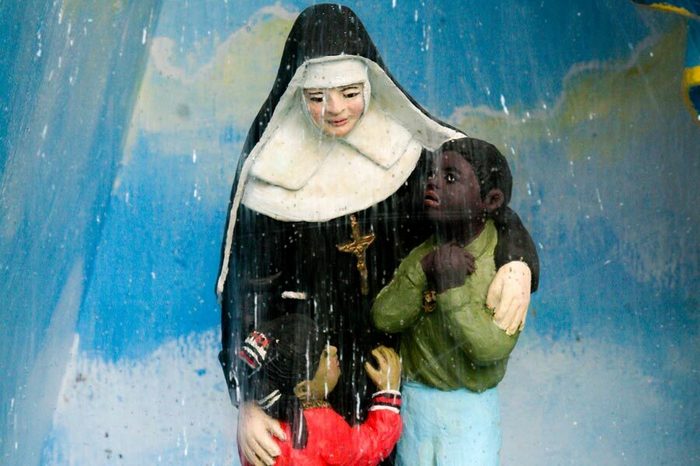
Many Christian denominations have apologized for their involvement in operating Indian residential and boarding schools both in the United States and Canada. The Catholic Church, however, has not issued an apology.
At the U.S. Conference of Catholic Bishops (USCCB) office in Washington, D.C., in early March, I showed Father Michael Carson, assistant director for Native American Affairs, copies of the Red Lake petitions from 1920, as well as archival documents showing Native opposition to the use of treaty trust funds to pay tuition at the Catholic mission schools.
When asked if he had any response after reviewing the documents, he said, “No.” When asked why Catholic leaders targeted these funds in particular, he responded, “I do not know.”
According to Carson, the USCCB subcommittee on Native Americans is “looking at an apology for the boarding school period,” and “we’ve made it clear to Catholic leaders that [reconciliation] needs to be dealt with at the highest level within the subcommittee and Bishops Conference.”
Carson declined to provide any details about the work of the Native American subcommittee, nor offered further comment about the Catholic Church’s siphoning of boarding school funds and the allegations around the treatment of students at religious schools. The chairman of the subcommittee, Bishop James Wall, indicated through a spokesperson that he could be available for an interview, but later declined and did not respond to follow-up requests.
Father Maurice Sands, Director of the Bureau of Catholic Indian Missions, did not respond to multiple requests for an interview or an emailed letter requesting comment.
According to boarding school survivors and advocates, Native wealth goes far beyond the monetary value of their lands and resources. It extends to their cultures, languages and traditions.
Any future reparations, many feel, should take the form of acknowledgement by and apologies from governments and churches for their roles in the boarding schools, educating the public about this history, and offering financial support for mental health programs in Indian Country.
Jody Beaulieu recalls how her uncle, Roger Jourdain, former Red Lake tribal chairman, often spoke of the United States creating a Marshall Plan to help rebuild Indian Country, similar to how the European recovery program helped rebuild the continent after World War II. The Catholic Church and other entities that operated Native boarding schools, Beaulieu suggests, could participate in rebuilding the Red Lake community by rehabbing the three-story St. Mary’s building that housed the girls’ dorm, where her mother slept so many years ago, into a youth shelter.
“They could create a safe home for some of our kids who are in great need,” Beaulieu says. “Many of our kids live in homes made unsafe by drug abuse and violence.”
Overwhelmingly, survivors and advocates speak about the need for transparency. “We just want the truth from the federal government and churches that operated boarding schools,” says Christine Diindiisi McCleave, citizen of the Turtle Mountain Band of Chippewa in North Dakota and executive director of the National Native American Boarding School Healing Coalition (NABS), a nonprofit advocacy organization.
Much of the information about the schools is scattered in federal and religious boarding school archives throughout the United States. In January 2020, NABS received funding to start digitizing federal boarding school archives and making them available to the public. The grant, however, does not include the extensive BCIM archives at Marquette.
Mark Thiel opposes the NABS digitization of the Marquette archives and says there are no current plans to digitize them. “[The NABS project is] promoting a partisan agenda,” he says. “I don’t like the idea of combining the archives with a partisan agenda.”
Collier, director of the AICSN, says the network advocates that “all religious and federal Indian boarding school archives, including those at [Marquette], be released immediately to tribal nations.” Collier adds, “If it is too burdensome for tribes, then NABS is a good organization to take over this work and digitize the material.”
Amy Cary, head of Special Collections and University Archives at Marquette, says the decision actually lies with the organization that gave Marquette the archives, the BCIM. Overall, McCleave says, “We are looking for some sort of truth and reconciliation commission,” as was done in Canada. Between 2007 and 2015, the Canadian government provided cash settlements for school survivors, gathered their stories in a report available online, provided funding for mental health healing, issued a public apology, hosted national events to share the history with the public and required government and religious organizations involved to provide access to their archives.
“What we would like instead of reconciliation,” McCleave continues, “is transformative justice.” According to Denise Lajimodiere, an Indian boarding school history researcher at North Dakota State University, churches and the government have a legal and moral obligation to support healing efforts among Native peoples.
“My hope is to see financial support from the federal government and churches to create healing efforts that are specific to the trauma suffered at boarding schools,” says Lajimodiere, whose father was a boarding school survivor. “We need counselors who are trained in the history of boarding schools — the losses of our heritage, land and families.”
Delphine Hurd, from Bad River, agrees: “I think [the Church] and government should apologize for all the things they did to us,” she says. “I think if they owned all that they did to us, then some sort of reconciliation could happen.”
This article was supported by a grant from the Leonard C. Goodman Institute for Investigative Reporting, and was reported in partnership with Type Investigations, which provided fact-checking by Nina Zweig. https://www.typeinvestigations.org/

